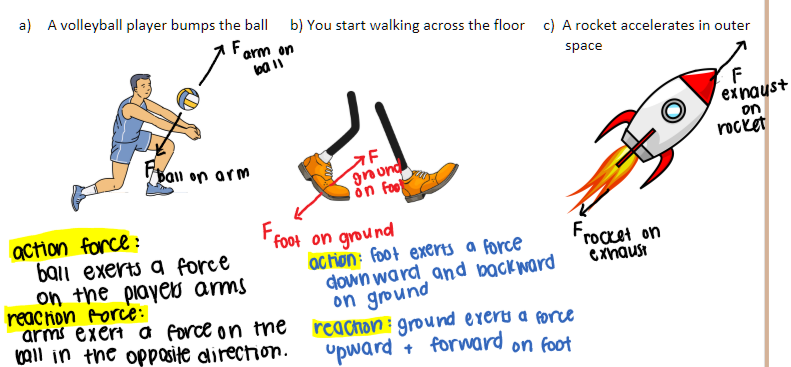Laws of Motion
First Law of Motion
An object at rest remains at rest. An object in motion stays at constant velocity unless enacted on by a net external force.
Objects at rest Objects moving at constant velocity
Describes motion of an object in isolation.
Inertia
The property of matter that causes it to resist changes in motion. It is directly proportional to the mass of the object A boulder will be harder to stop than a feather.
Important Implications
- A non-zero net force will change the velocity of an object. The velocity can change in magnitude, direction, or both. If then there will be no change in velocity. If then there is a net force acting upon the objects
- A net force is not required to maintain the velocity of an object.
- External forces (i.e. An applied force) are required to change the motion of an object. Internal forces have no effect on the motion of an object
Second Law of Motion
If the net force on an object is not zero, the object will accelerate in the direction of this net force
Where:
is in is in is in Newtons ()
Describes motion of an object in isolation The magnitude of the acceleration is directly proportional to the magnitude of the net force and inversely proportional to the mass of the object.
Steps to solve Force Problems
- Draw a FBD. Be sure to label the positive direction.
- Write an equation: (sum of all forces acting on the object)
- If the object is at rest or moving with a constant velocity, rewrite as 0.
- If the object is accelerating, rewrite as .
- Rewrite as if applicable.
- Plug in known values.
- Solve for the unknown variable.
Third Law of Motion
For every action force, there is a simultaneous reaction force that is equal in magnitude but opposite in direction.

Describes the motion of objects that are interacting.